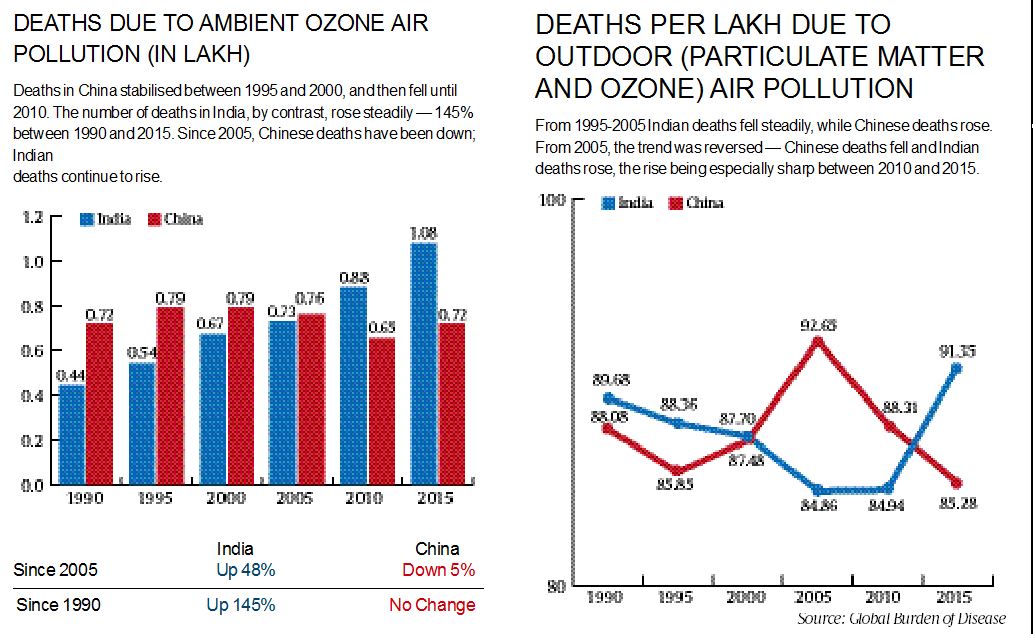Jay Mazoomdaar is an investigative reporter focused on offshore finance, equitable growth, natural resources management and biodiversity conservation. Over two decades, his work has been recognised by the International Press Institute, the Ramnath Goenka Foundation, the Commonwealth Press Union, the Prem Bhatia Memorial Trust, the Asian College of Journalism etc. Mazoomdaar’s major investigations include the extirpation of tigers in Sariska, global offshore probes such as Panama Papers, Robert Vadra’s land deals in Rajasthan, India’s dubious forest cover data, Vyapam deaths in Madhya Pradesh, mega projects flouting clearance conditions, Nitin Gadkari’s link to e-rickshaws, India shifting stand on ivory ban to fly in African cheetahs, the loss of indigenous cow breeds, the hydel rush in Arunachal Pradesh, land mafias inside Corbett, the JDY financial inclusion scheme, an iron ore heist in Odisha, highways expansion through the Kanha-Pench landscape etc. ... Read More
Pollution: In coal, old vehicles, firecrackers, story of China victory over India
In terms of deaths per lakh population, India is now choking at a rate faster than China’s. At the turn of the millennium, they levelled at 87-88 deaths per lakh. In 2015, the number is 91 for India, 85 for China.
 In terms of deaths per lakh population, India is now choking faster than China. (File Photo)
In terms of deaths per lakh population, India is now choking faster than China. (File Photo)
Two of the world’s fastest growing economies, China and India, are also rivals for the world’s highest air pollution health burden. In 2015, India recorded a higher casualty rate due to outdoor air pollution than China — a first since 2000.
In fact, for the first time since 1990, India also lost more people to outdoor air pollution than China. But the 18,000 margin — 11.98 lakh to 11.80 lakh — may not tell the full story. One needs to look at death rates to get the real measure of the risk in the two countries.
Read | Death By Breath: A look at key studies on Delhi’s pollution and how warnings were ignored
In terms of deaths per lakh population, India is now choking faster than China. At the turn of the millennium, when outdoor air pollution killed nearly 2 lakh more in China, the countries levelled out at 87-88 deaths per lakh. After 15 years, India records 91 deaths per lakh against China’s 85.
The picture becomes more grim if one takes into account deaths resulting from indoor air pollution caused by the burning of solid fuel for cooking. In 1990, indoor air pollution killed 9.13 lakh and 10.42 lakh in India and China respectively. After 25 years, these numbers stand at 9.77 lakh and 5.90 lakh respectively. In terms of death per lakh, China has cut 47 deaths (90 to 43) while India has managed only 30 (105 to 75) since 1990.
Read | What’s happening to Delhi air will have you gasping for breath
The numbers, part of the biennial Global Burden of Disease (GBD) data, have recently been used in the State of Global Air report, 2017, prepared by the Boston-based nonprofit Health Effects Institute, and the Institute for Health Metrics and Evaluation at the University of Washington.


While the aggressive promotion of subsidised LPG and more affordable CNG for cooking has led to a moderate reduction in household air pollution, India’s appetite for more cars, power plants and industries have made outdoor air pollution worse. Unsurprisingly, the GBD 2015 report ranked outdoor air pollution as the third leading health risk factor in India.
Outdoor air pollution is caused by ambient particulate matter (PM) that includes coarse and fine dust. Nitrogen and sulphur oxides (NOx and SOx), which transform into secondary particles, account for up to 34% of PM pollution in India. Ground-level ozone, another secondary pollutant, is produced by the reaction of two primary pollutants, NOx and volatile organic compounds (VOCs), in sunlight and still air.
The Union Health Ministry’s Steering Committee on Air Pollution and Health Related Issues underlined in an August 2015 report the “strong correlation” between high levels of pollutants and coal-fired power plants. “With substantial growth in coal-based power predicted even in the most conservative of scenarios, and lax standards to address stack emissions, this is a problem that is only going to worsen with time,” it said.
The Committee recommended “quicker uptake of clean technologies… tight particulate standards for power plants and… standards for nitrogen oxides, sulphur dioxides and mercury to reduce exposure to power plant emissions.”
In 2016, an IIT-Kanpur study attributed “nearly 80% of sulfates and 50% nitrates to the receptor concentration” in India to coal-fired plants. In 2015, the Paris-based International Energy Agency (IEA) put the numbers at 53% and 40% respectively.
Indeed, coal consumption in India has doubled since 2005 without significant investment in cleaner technologies. Over the same period, China too recorded a nearly 50% growth in coal consumption — however, it has cut down on coal since peaking in 2013, and put in place emission control measures since 2004.
Before it enforced stricter emission norms in January 2012, China raised electricity prices for industrial users by RMB 0.03 (30 paise) per KWh to finance an estimated $ 41 billion needed to upgrade anti-emission equipment.
India notified its first comprehensive emission standards for thermal power plants only in December 2015 and set a 2-year compliance window.
With not one among 400-plus thermal units complying yet, the government is set to relax the norms, and also extend the compliance deadline.
While Diwali continues to be celebrated with firecrackers, China restricted traditional Chinese New Year fireworks in 700 cities. Shanghai cut the number of sellers, and Beijing made citizens buying more then five boxes of fireworks register with authorities.
While the Indian government moved the Supreme Court against the ban on 10-year-old diesel vehicles, China is cutting down vehicular fuel consumption from 6.9 litres to 5 litres per 100 km between 2016 and 2020, at an annual rate of 6.2%. It aims to phase out up to 6 million highly-polluting vehicles, and is implementing a ‘Faster Adoption and Manufacturing of Electric vehicles’ programme.
According to GBD data, outdoor air pollution killed 9.7 lakh and 12.2 lakh people in India and China respectively in 2005. Ten years on, the Indian count was 12 lakh, topping the 11.8 lakh deaths in China. That is a 24% rise in India, compared to a 3% fall in China.



- 01
- 02
- 03
- 04
- 05




































